Oh, garden pests, how much we dislike finding them all over our plants! We work so hard at sowing and tending our little vegetable plants, and then they show up and destroy all our hard work. Here's good news, though. Most of these pests have been around for decades, and there are tried and true ways to get them away from your vegetables.
This list compiles the most common garden pests and natural non-chemical methods for dealing with them. For gardeners new and experienced, this information is essential and will get your plants through the season to maturity in good health and with excellent production.
Jump to:
The Secret to Success: Be Proactive!

The key to combating pests effectively and with as little damage to your plants as possible is to be proactive. Don't wait for the bugs to show up. Research which pests are common in your area, and then get yourself prepared. If Colorado beetles are a regular visitor to gardens where you live, expect that you'll see them too. There is no reason to be caught off-guard. We can all hope that maybe the pests will skip our garden this year, but seriously, that is not likely to happen any time soon.
- Regularly monitor the garden. This doesn't just mean doing a walk-through and gazing about. Look underneath leaves, look at the stems, and observe the entire plant from week to week to see if you notice any changes. You won't see any infestations if you're not looking. Some of these pests are really tiny, too small to see with the naked eye, but you will see their handiwork if you're paying attention. Do this every week. You don't need to inspect every plant, but at least take a good look at several plants of each vegetable.
- Keep an eye out for signs of obvious pest issues. Wilted leaves, dying plants, black spots, yellow tips, shriveled & mangled growth, and spots on fruits are just a few of the signs of pest problems. If you see one plant with black spots, chances are the others in the group will get them soon, too. Remove infected plants, so they don't pass it on to any others.
- Don't put off treating infestations. If you see any issues, deal with them immediately, or they will only get worse.
- Know your pests & know what to look for. This guide is here to help you, but you should also do some more research on your own to differentiate between good and bad bugs. "Knowledge is half the battle," as the saying goes! There are many types of good insects in the garden, whom you want to encourage. Getting to know your natural garden foes and helpers will make gardening much easier and you much more successful.
- Rotate crops regularly. Bugs are opportunistic, and many are plant-specific. If you plant beans in the exact same place every year, the bean-eating insects will overwinter in the soil and hop right back on your plants in spring. Don't give them this opportunity. Plant varieties in different locations in the garden each year to keep the bugs from learning your patterns and taking advantage.
- Focus on soil health. When the soil is healthy, so are your plants. And, healthy plants are much better at fighting off pest infestations successfully.
The 10 Most Common Garden Pests and How To Fight Them
Aphids
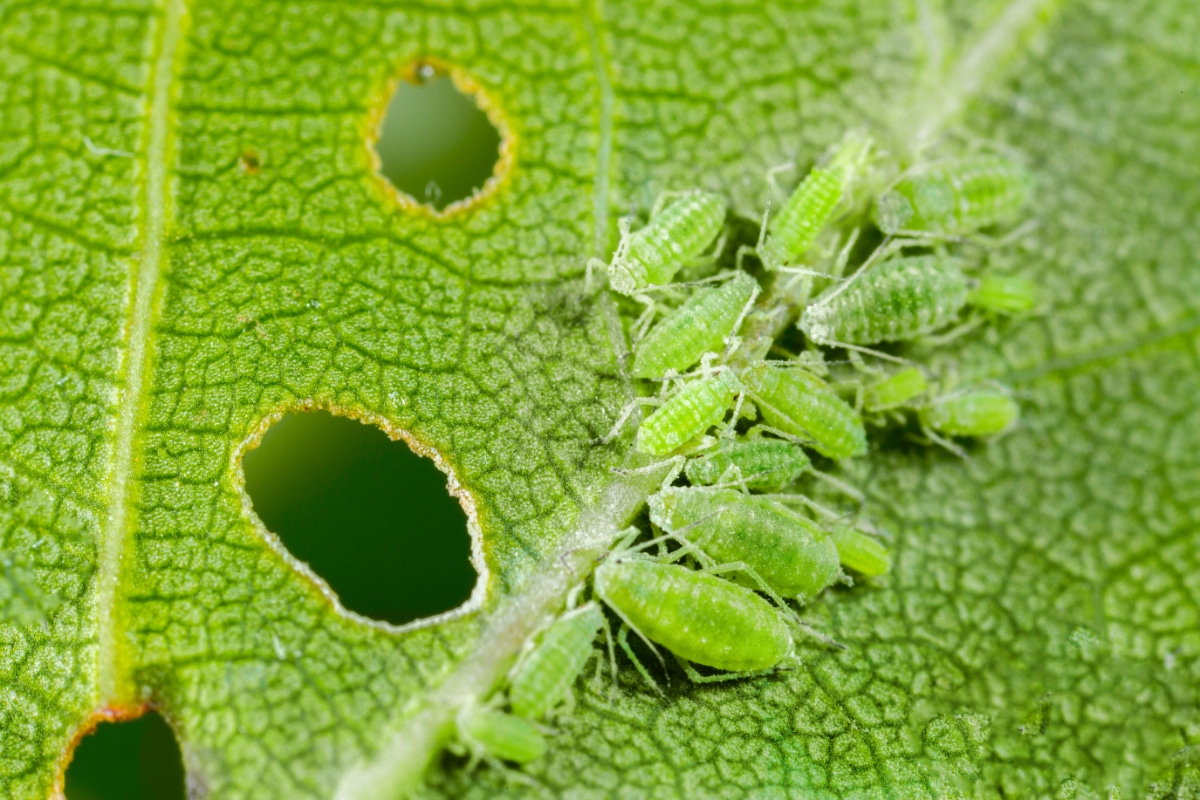
Top on the list, these little buggers are everywhere and a common garden troublemaker. Aphids are teensy pear-shaped bugs that suck the sap out of leaves and stems. As if that isn't bad enough, they excrete a sweet, sticky honeydew substance that attracts ants and encourages fungal diseases. Aphids also pass on diseases to the plants while they're feeding. These guys are bad news!
Signs of an aphid infestation: Sticky honeydew on the underside of leaves, wilted leaves, yellowed leaves, or black sooty fungus residue.
Treatment: Use a natural pesticide, like the Basic Insect Eliminator, which uses a simple soapy water solution to get them off the plants. If that doesn't work, upgrade to stronger-acting neem oil. Also, encourage natural predators, like lacewings, ladybugs, and aphid midges.
Cabbage Maggot
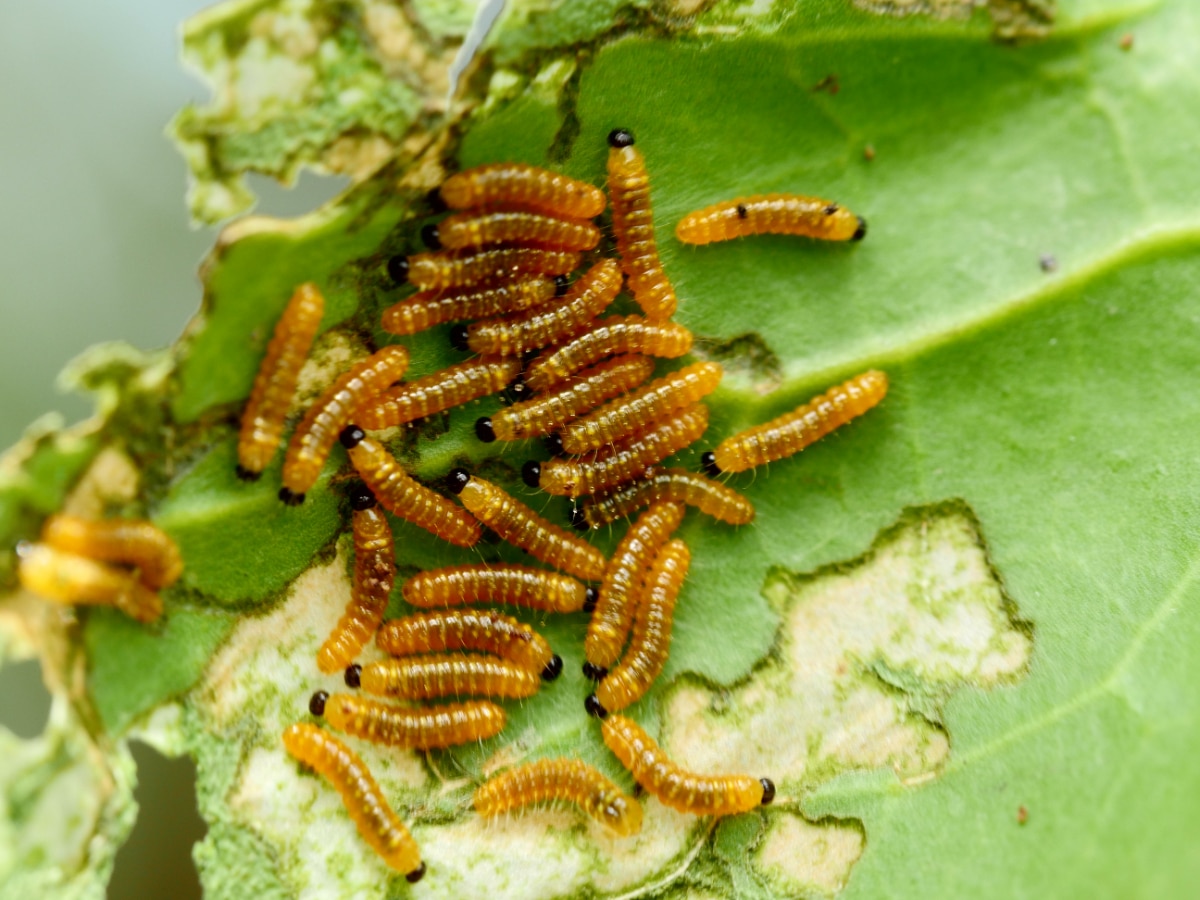
The adults are tiny gray-brown flies, but it is the larvae that are the biggest issue. Adult females lay their eggs at the roots of cabbage and other brassica plants, including broccoli, brussels sprouts, and cauliflower. The larvae then gorge themselves on the roots of your vegetable plants, causing the plants to die.
Signs of a Cabbage Maggot infestation: Because the larvae are so tiny, about ⅓” long, they are almost impossible to see. The first signs of trouble are wilting foliage on these plants and stunted growth.
Treatment: Cover young cabbage plants with row covers until after the egg-laying season (this will vary based on where you live), so the flies can't get to the roots to lay eggs. If you see the flies around, look for their eggs at the base of your brassica plants. Destroy any eggs that you find. Plant radishes near the cabbage plants as a trap plant. The maggots love radish and will eat that instead of your cabbage. You'll need to pull up the radishes and destroy them when they begin to die. It's also a good idea to encourage Rove beetles, as they are incredible at cleaning up cabbage maggots.
If cabbage maggots are a consistent problem, year after year, try planting red cabbage instead of green. Red cabbage has some natural resistance to these pests.
Colorado Potato Beetle
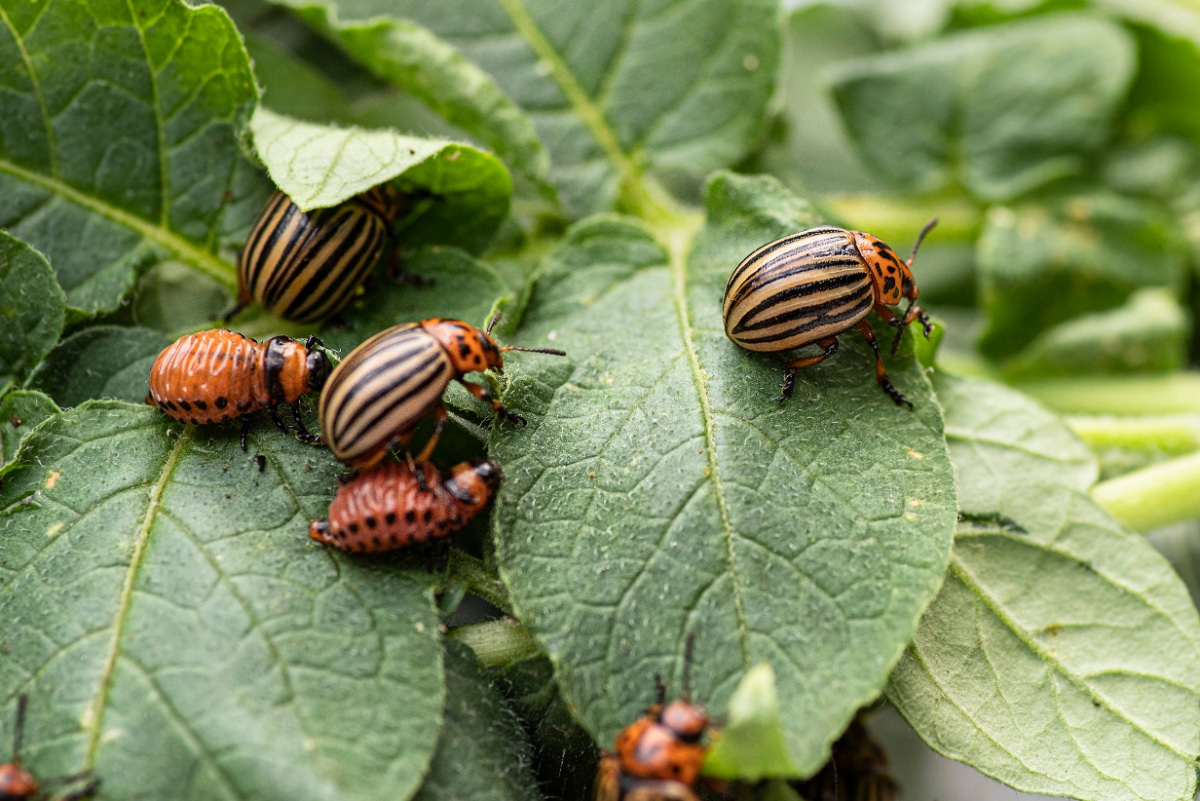
Don't be fooled; these pests won't just eat your potato plants. Colorado Potato Beetles also thoroughly enjoy all the nightshade plants, including tomatoes, peppers, and eggplants. They eat the foliage, causing stunted and poor growth, and often decimate younger plants. This hard-bodied beetle is shaped like a ladybug, but it has black and yellow stripes on its back. They're usually quite easy to spot with these markings, and because there is never just one! Colorado Potato Beetles females can lay over 500 eggs in 5 weeks, and they take only 2-3 weeks to mature. Their ability to multiply so quickly is one reason they are such a problem for gardeners. You want to catch these pests early!
Signs of a Colorado Beetle infestation: Defoliated plants, leaves with tons of holes, complete sections of the foliage gone. Plus, you will see them in droves all over your plants. They aren't difficult to spot or identify.
Treatment: These ravenous beetles have been around for a long time, destroying crops around the world. Many pesticides have been employed to fight them, and because of that, the beetles are now immune to some. Using pesticides should be a last resort. If you see a few, inspect all your plants because there will be more. Handpick them off and drown them in a tub of soapy water. Be sure to check underneath the leaves for eggs and scrape them off too. If they get out of hand, though, which they often do, handpicking gets tedious. You'll have buckets of them in just a few hour's time! The best offense with these guys is a good defense. Encourage beneficial insects like ground beetles and soldier beetles. Also, an application of neem oil works wonders. Be sure to put fleece or plant covers over the sprayed plants, though, so the neem doesn't hurt bees or butterflies.
The best way to deal with Colorado Potato Beetles is to plan for them. They are everywhere, so you can reasonably assume you'll see them in your garden. The adults overwinter in the soil, waiting for the following years crop. Never plant potatoes, tomatoes, eggplant, or peppers in the same place year to year. Implement no-till methods because that will increase beneficial insect populations. Beneficials harbor in the soil, and when it is tilled, the populations are destroyed.
Cutworms
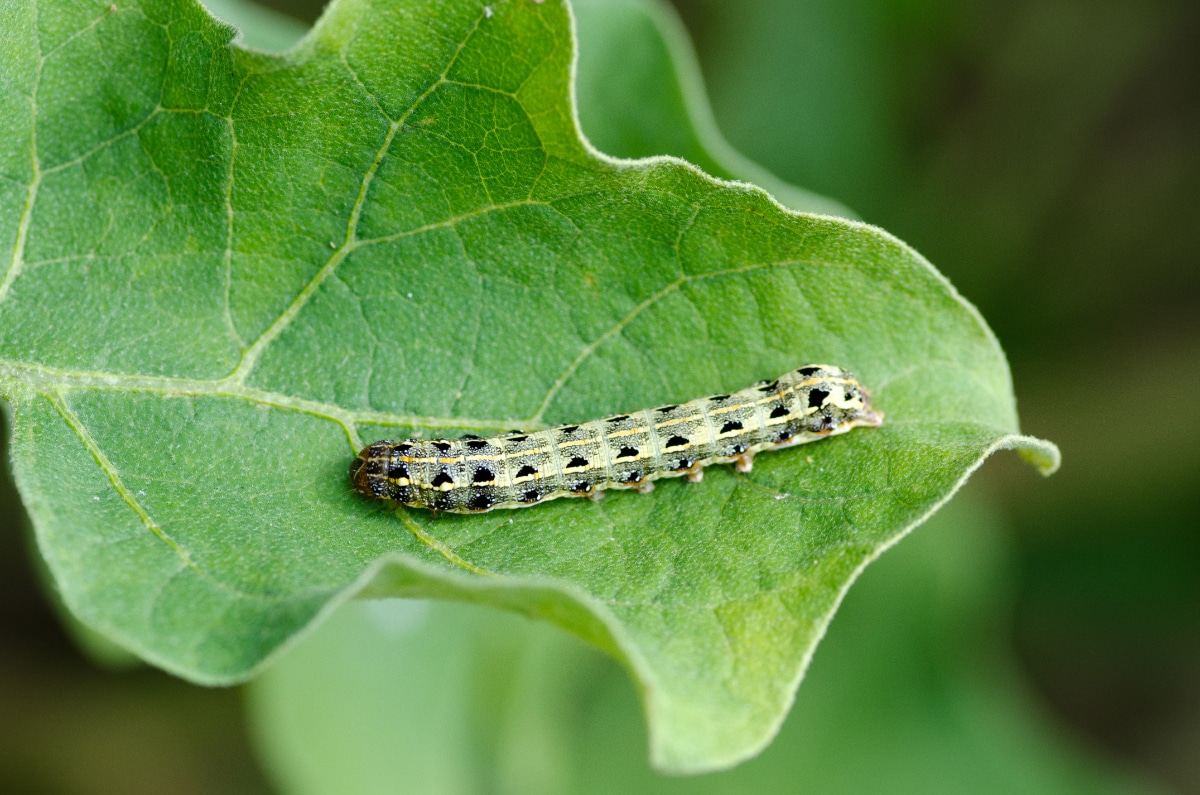
A moth larvae that feeds at night, cutworms live up to their name. These pests cut the stem and roots of plants. They will cut right through the stem of young plants and cause damage to the tougher stems of older plants. Cutworms look like grubs and are often confused with Japanese Beetle larvae. They are both bad, so don't delay dealing with either one! Cutworms come out at dusk, so to be sure that's what you've got in your garden, do a dusk garden patrol.
Signs of a cutworm infestation: Plant stems that have been chewed through at the base. Shriveled and dying plants. Plants with compromised stems will die, even if they look totally fine from the top.
Treatment: To prevent cutworms from getting to young seedlings and sprouts, make plant collars to put around the stem. Many people use cardboard paper towel tubes for this, as they're almost the perfect size. Cut 4" tall pieces off the tube and put them snugly in the ground, around the stem. Placing collars around each seedling isn't really viable or fun for larger gardens, but there are other effective methods, too. Diatomaceous earth or coffee grounds sprinkled around the plants deters cutworms. Birds love a snack of cutworms, so it's a good idea to encourage these natural predators to your garden. Because cutworms exist mainly in the soil, pesticide sprays don't work well to fight them.
Flea Beetles
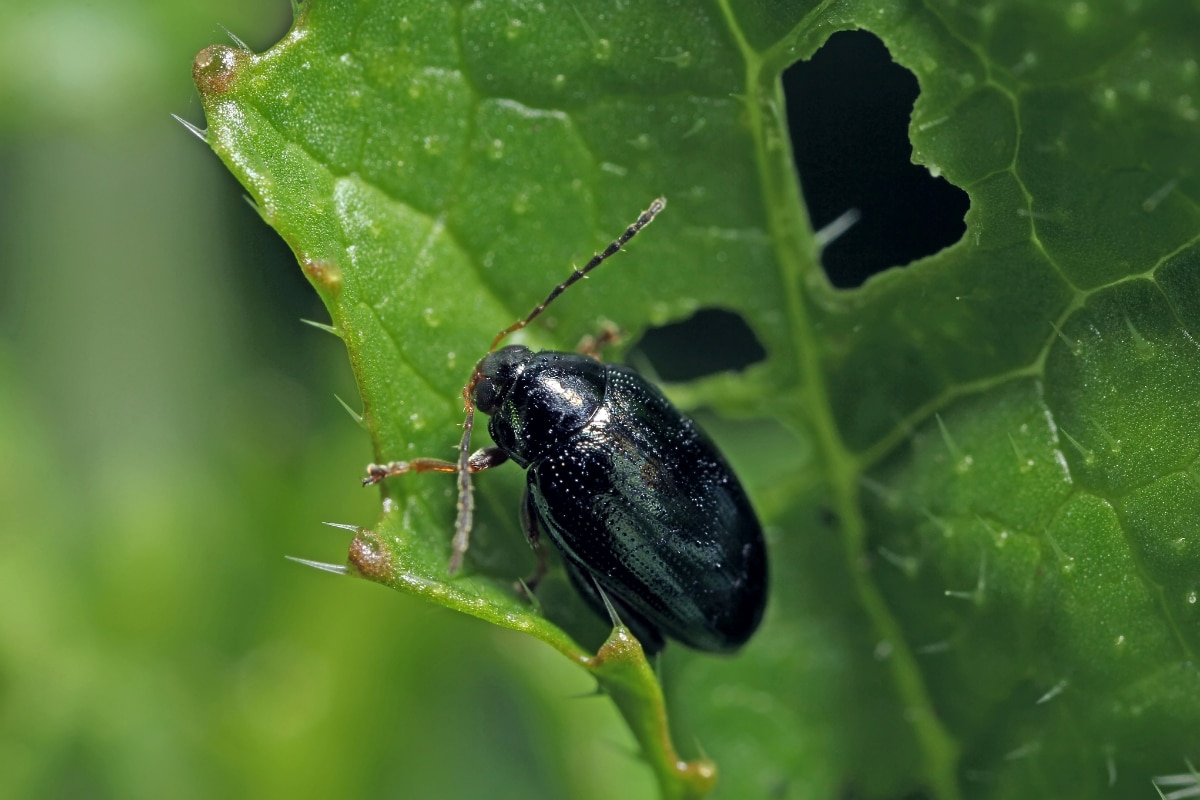
There are dozens of flea beetle species, but they all act similarly. Flea Beetles eat the foliage of broccoli, cabbage, cauliflower, kale, radish, tomato, eggplant, and pepper plants. Adult Flea Beetles overwinter in wooded areas or piles of brush and wake up in spring to eat leaves, leaving hundreds of tiny holes in the foliage. Later on, they lay their eggs at the roots of vegetable plants. The larvae then feast on the roots. While the damage they cause rarely kills matured plants, they may transmit a bacterial disease to the plants, and that is the biggest threat.
Signs of a Flea Beetle infestation: Small round holes in foliage. The adults are small, black, and jump like a flea when disturbed.
Treatment: Dust leaves with talcum powder or use a spray of 1 cup alcohol, 2.5 cups water, and 1 teaspoon non-toxic liquid dish soap.
Japanese Beetles

Although they're a huge pain in the garden, Japanese Beetles are quite pretty. They have metallic blue-green shells with bronze wings and really stand out. Their showiness is a plus since you'll easily be able to tell if they're in your garden. Unfortunately, if you see Japanese Beetles, you've got a big problem. These pests are super common in gardens east of the Mississippi, and their destruction is extreme. Adult Japanese Beetles eat green foliage and will completely defoliate plants and eat the flowers too. While they're doing that, their larvae are eating the plant roots. These insect pests are double-trouble!
Signs of a Japanese Beetle infestation: Skeletonized leaves of plants, plus, you'll see the adult ones flying around eating your plants.
Treatment: If you see adult Japanese Beetles, handpick them off the plants. Apply row covers over delicate or young plants to protect them. The best way to combat Japanese Beetles is to deal with them in the larvae stage. Eliminating the larvae means fewer adults to deal with through the season. Treat the soil where the Japanese BeetleLawn Pest NoLawn Pest No grubs live with milky spore bacteria. Milky spore is a safe, natural bacteria that only kills Japanese Beetles. It stays in the ground for up to 10 years and is super effective at controlling and eliminating Japanese Beetle populations.
Mexican Bean Beetles
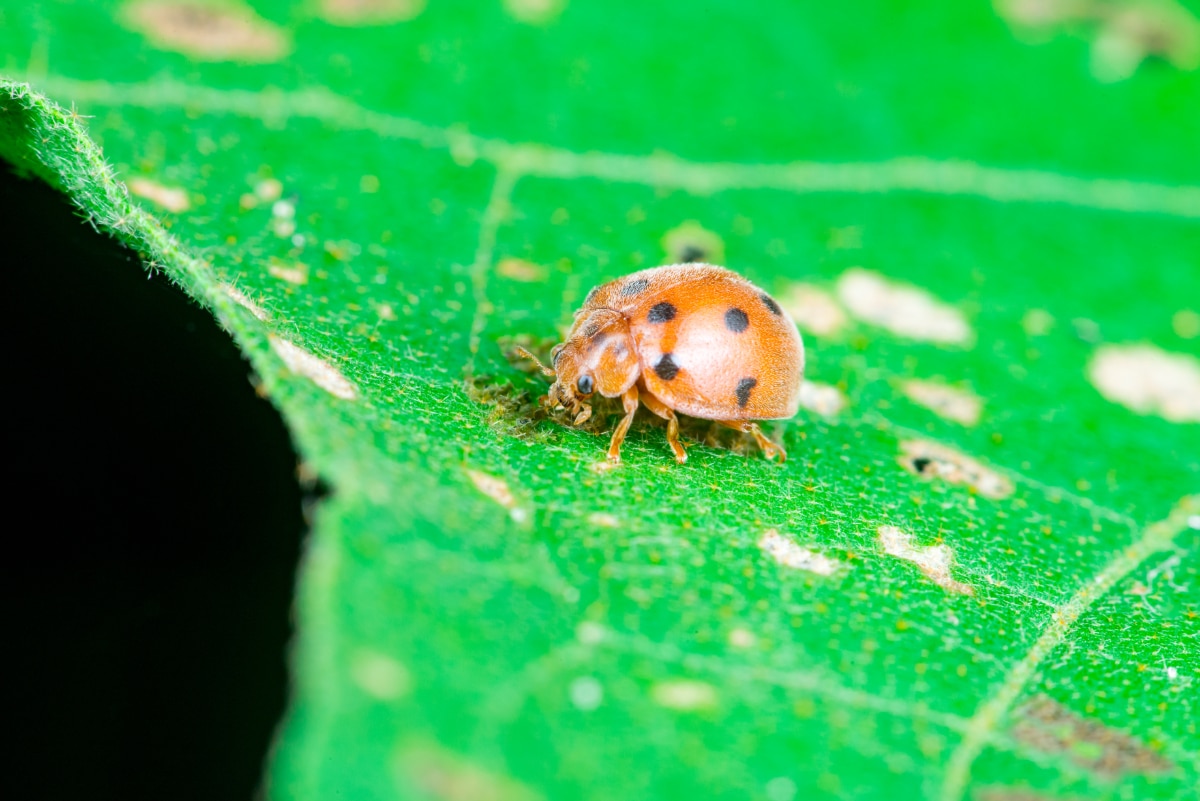
Another pest that, for better or worse, is super easy to spot, Mexican Beetles, are prevalent and highly destructive. Adult Mexican Bean Beetles look like ladybugs, but their shells are more orange-yellow than red, and they have 16 black spots on their back. Ladybugs generally only have up to 9 or 13 black spots. It's the larvae, though, that stand out the most. Mexican Bean Beetle grubs are bright yellow and fat, with short spines across their backs. They take over entire crops, and you'll see plant leaves covered with these little grubs. The first sign is bright yellow eggs on the undersides of leaves, especially bean leaves (hence their name!). This is why it's important to do weekly checks underneath leaves. When Mexican Bean Beetles invade, they leave little behind except leaf skeletons. Both the larvae grubs and adults eat the foliage and in record fashion.
Signs of a Mexican Bean Beetle infestation: Rows of bright yellow eggs on the underside of bean leaves, bright yellow grubs on bean foliage, and adult ladybug-like beetles flying around bean plants. Also, you won't be able to miss all the lace-like holes in the bean plant foliage.
Treatment: The key to keeping these pests in check is to catch them early. Remove egg deposits with soapy water or scrape them off the leaves. The more eggs you prevent from hatching, the fewer grubs there will be eating your bean plants. Dust affected plants with Diatomaceous earth to kill eggs and larvae. Larvae overwinter in the soil, hoping you'll plant beans in the same spot next year. Always move the location of your bean crop year to year! Encouraging beneficial insect predators like lacewings, ladybugs, and minute pirate bugs also helps a lot.
Slugs (and Garden Snails)
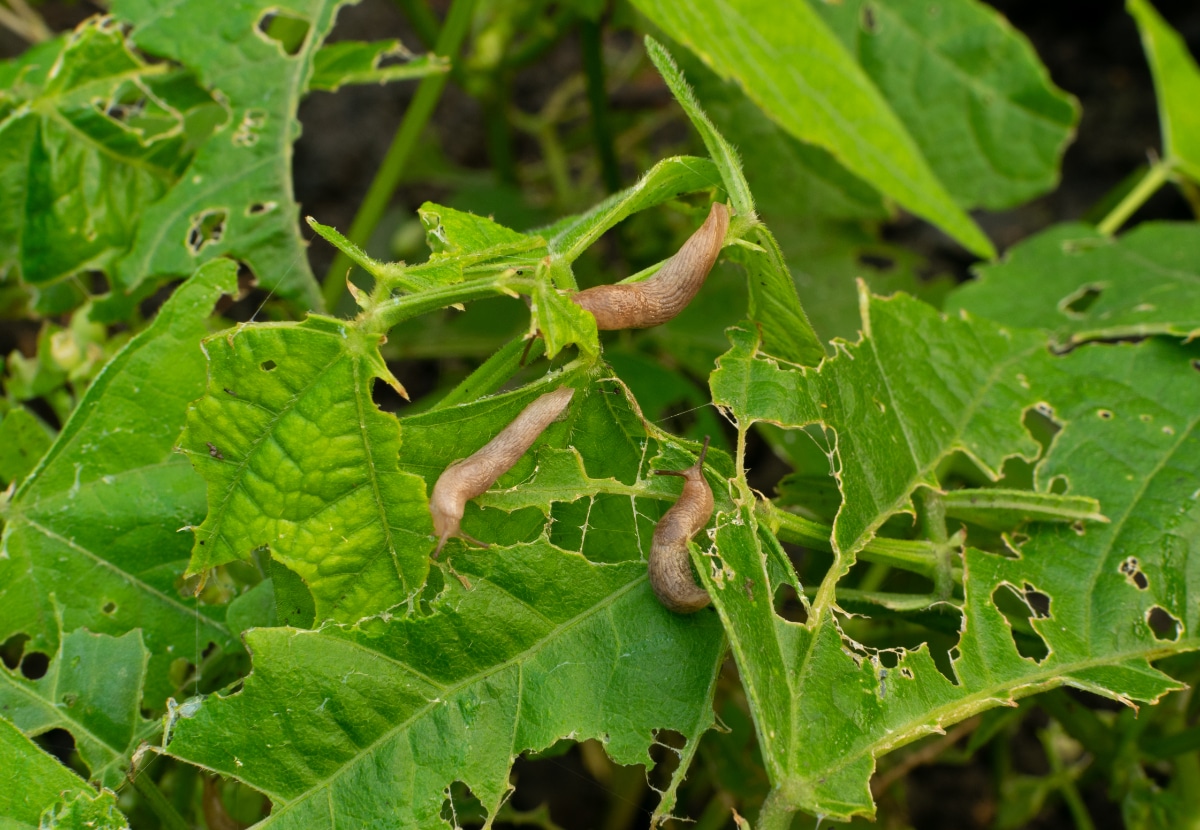
A common cause of misery in vegetable gardens around the country, slugs aren't just destructive; they're disastrous. Where there is one slug, there are hundreds – they do not exist singularly. These slimy guys only come out at dusk and then spend the whole evening eating your vegetable plants until dawn comes around.
Signs of a slug infestation: On the plus side, these buggers are hard to miss, as are snails. Check around your plants at dusk, and you'll see them if they're around. Other signs include jagged holes in leaves and telltale slime trails.
Treatment: If you only see a few, handpick them off and relocate them far, far away. If there are hundreds, the best deterrent is Diatomaceous earth, eggshells, or coffee grounds sprinkled around the plants. The downside to these treatments is that rain washes them away, and slugs love rainy, wet days. We've also had good luck placing seaweed around plants, but this needs to be done carefully since too much seaweed will increase the soil's salt content and affect plant growth. The best way to deal with slugs is to build a habitat that encourages natural slug-eaters, like birds, frogs, toads, snakes, and opossums. A garden filled with these creatures will keep the slugs in check.
Many people recommend using a beer trap, placing out shallow dishes of beer to attract the slugs who will then fall in and drown. While this does technically work, slugs love the smell of beer and will come from far away to drink it. So, essentially, what you're doing is attracting more slugs to your garden space. And, not all of them are going to drink themselves to death, so, now you've got more slugs to deal with in the garden.
**Do not use chemicals or pesticide bait pellets to kill slugs or garden snails.**
Yes, they do work, but then the birds, snakes, and opossums eat the dead slugs and also get poisoned. Before using any poisons or chemicals, think about the food chain and who will be hurt by their use besides just the target pest.
Squash Bugs
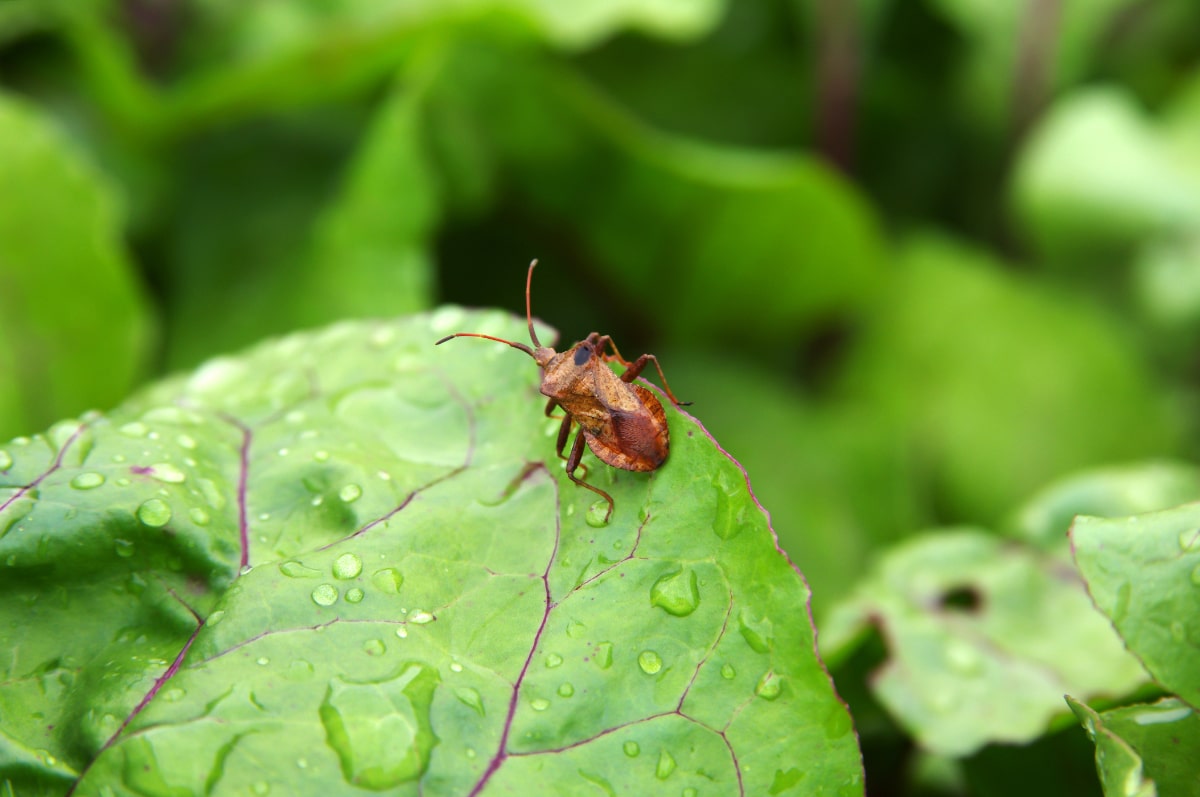
As the name suggests, look for these bugs on your squash plants, including zucchini, summer squash, winter squash, and pumpkins. They also like cucumbers, watermelon, and cantaloupe plants. Squash Bugs lay their eggs on the underside of leaves, long rows of small brown eggs. These pests look a lot like stink bugs and even have the stinky smell when squished. Squash Bugs are relatively big, over ½" long, and have a brownish-gray body with a flat back. They often hang out in groups and move quickly across plants. The damage these bugs cause is intense. They inject toxins into the stem and suck the sap out, causing leaves to turn yellow, then brown, and then black and brittle. The adults overwinter in dead leaves and vines, then fly to the garden the minute they see vines forming. Once there, they lay their eggs underneath the large leaves.
Signs of a Squash Bug infestation: Look under the leaves of all squash and melon plants regularly. These bugs are challenging to get rid of, and early detection is critical.
Treatment: Scrape eggs off leaves, and don't stop. If you see evidence of them, check every single day! Cover young squash crops in the spring when the adults are emerging. You'll need to remove the covers when the plants start to blossom for pollination.
To prevent outbreaks of Squash Bugs, compost or burn all old squash vines from the garden so they can't stay there. Plant nasturtiums and tansy around your squash plants as a natural repellent. If you've got a considerable Squash Bug problem, consider planting resistant squash varieties.
Tomato Hornworm
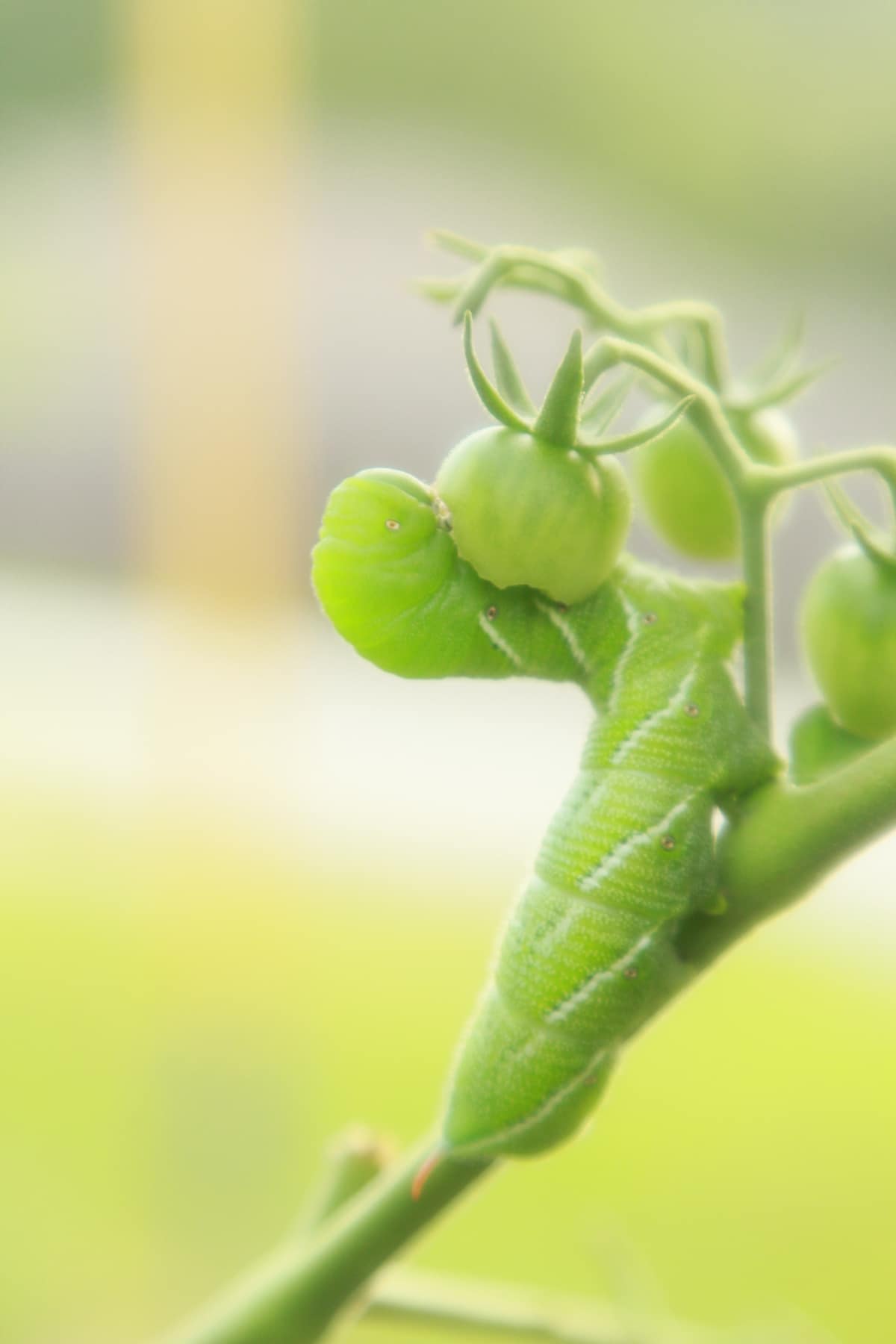
This tomato pest is complicated. The Tomato Hornworm is actually an immature Sphinx Moth, an amazing moth that should be protected. However, it can cause quite a lot of damage to tomato plants when it's in caterpillar form. Tomato Hornworms are easy to identify; they are quite striking in appearance with bright, fluorescent green skin and a dark horn-like appendage on their backside.
Signs of a Tomato Hornworm infestation: You'll see them! Plus, you'll see holes in the tomato leaves where they've been eating.
Treatment: Please don't kill them unless absolutely necessary. Handpick them off plants and relocate them someplace else with lots of greenery to eat. If they're a constant problem, plant some tomatoes far from your vegetable garden and relocate the hornworms there so they'll leave your plants alone. There's also a parasitic wasp that preys specifically on Tomato Hornworms. Encouraging a population of these wasps is a natural way to keep hornworm populations in check.
Take A Deep Breath; There Will Always Be Pests

One thing to remember and keep in mind is that there is no way to completely rid the garden of pests. And actually, you don't want to. A sterile garden is not a healthy garden. While it may seem crazy to say small populations of pests are even good for the garden, it's true. Here's why – All those beneficial insects you have in the garden and that you are encouraged to stay, they need to eat. If there are no pests to eat, many of them revert to eating butterflies and other good insects. Or, if there isn't enough food, they move on. Then, next year, you won't have as many beneficial predators to help in the garden. Pests aren't all bad; in small, controllable numbers, they're fine and needed to keep the garden thriving. However, that being said, some pests like the Colorado Potato Beetle and Mexican Bean Beetle should be dealt with as thoroughly as possible. There is no such thing as a small population of these destroyers.
Don't forget, be aware and be prepared. You're going to get pests; there's no way around it. Keep a watchful eye on the garden, look on leaf undersides at least once a week, and don't delay if you see an issue. You'll drive yourself crazy if you try to eliminate them all, so focus on dealing with the especially bad ones and increasing the good predators to help with the rest. You've got this! Happy Gardening!

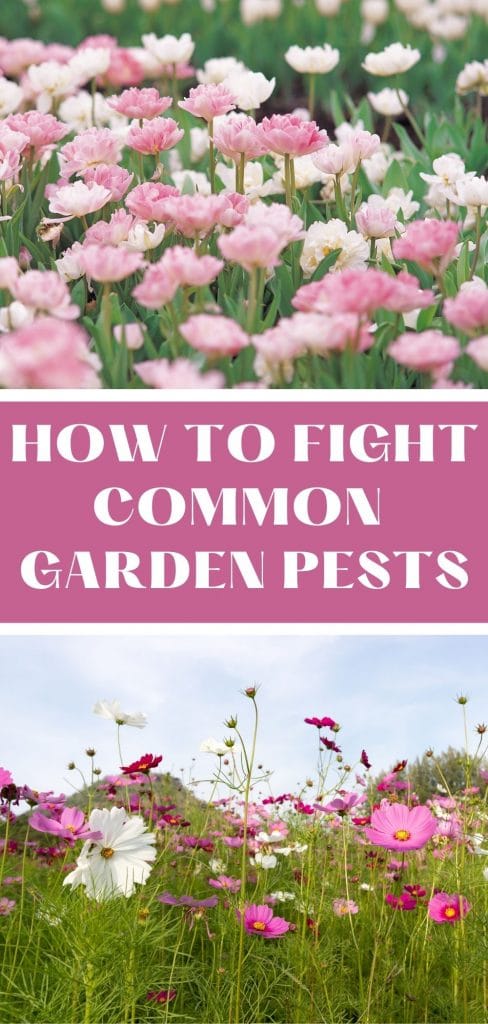
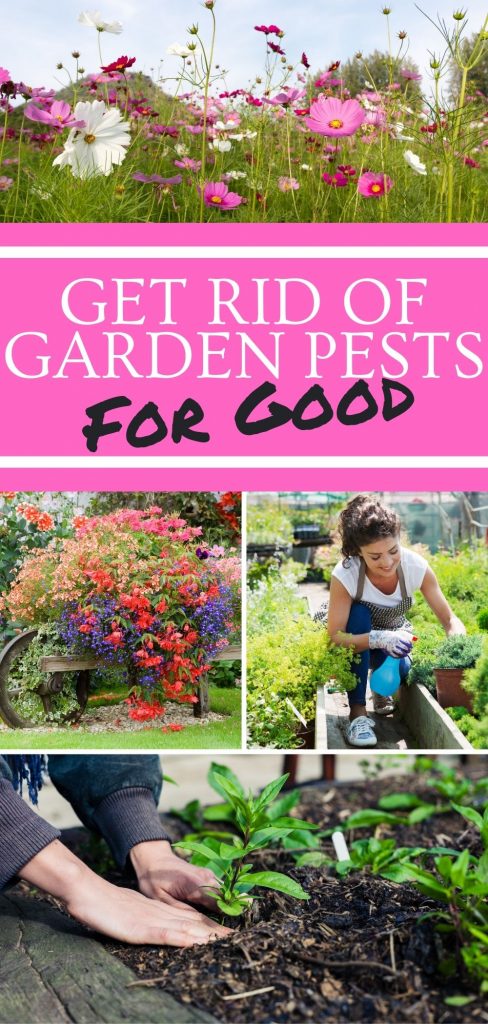



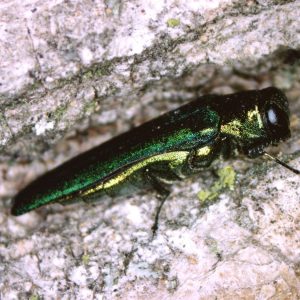
maria hemara
thank you for sharing
Jinny
Hi, you guys are a great help. I finally know what that crazy pest was that was under all my poppies last summer. Aphids. It also prepares me for my greenhouse. My little brother too. Who is officially my assistant. I now know how to create a natural defense of bugs and two emergency natural pesticides (Basic Insect Eliminator and Dr. Earth Final Stop) for my greenhouse. It makes me feel so much better. Also considering the fact that it's gonna come in THREE DAYS! I'v really got nothing against all insects, there pretty cool. But not in my garden.
Mary Ward
Agreed! Can't they just eat the weeds??